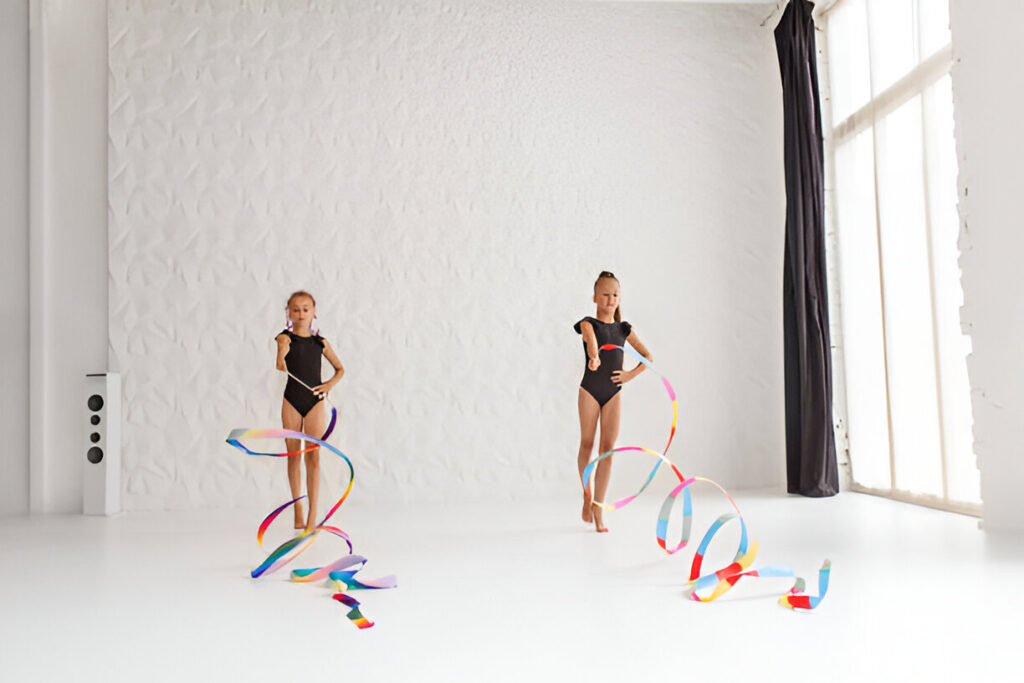In principle, leotards are considered basic parts of performance wear for both gymnasts and dancers. In many ways, they look similar, but gymnastics leotards differ from dance leotards. Each has been built and tailored to meet different requirements between the activities. In the review of this article, we will break down the functionality and differences of each type of leotard, focusing on functionality, design, and material. Further down in this review, we will describe how gymnastics leotard manufacturers consider all the demands placed on these suits by the rigorous sport.
Functionality and Purpose
Functionality is the most obvious difference between gymnastics leotards and dance leotards. Gymnastics is an impact sport that uses flips, twists, and other complex manoeuvring apparatuses. Thus, gymnastics leotards have to offer the maximum support and flexibility so as not to restrict gymnasts while performing. Manufacturers of gymnastics leotards make sure these garments will stay in place through a demanding routine while giving full coverage to prevent wardrobe malfunctions.
On the other hand, a dance leotard tends to be much more flowing and elegant than a gymnastics one. While dancers also must function with an entire range of motion, aesthetics are paramount, and leotards are designed to create a pleasing appearance for the spectator. While perhaps not as resilient as gymnastics leotards, dance leotards should indeed be comfortable and flexible as one dance ballet, jazz, and other forms.
Features of Design
The design of gymnastics and dance leotards differs. For example, gymnastics ones are much more dramatic and use bright color , bold patterns, and rhinestones. The vibrant designs display the gymnast, as the bright colours of such a creation allow it to stand out in a competition, and the parts with rhinestones let even the smallest movements be the most effective. Long and three-quarter-length sleeves for gymnastics leotards also cover extra body parts and thus can serve as additional support.
Compression garments, which are close-fitting and remain in place while the gymnast performs a routine, are mainly used by gymnastics leotard manufacturers. That’s an essential safety consideration since loose and uncomfortable clothing may interfere with the performance or become distracting during the event.
On the other hand, dance leotards are more minimalist in design. They are often straight-coloured or not flashy, as they suit the traditional view of most dance performances. Also, leotards are typically sleeveless, cap-sleeve, or short-sleeved to accommodate an individual’s arm mobility, especially if he specialises in ballet and depends on arm motion.
Material Difference
Material choices make it essential with leotards, considering the requirements for gymnasts and dancers in terms of clothes being freest while comfort is considered. Gymnastics leotard manufacturers usually use durable, stretchable fabric like Lycra, spandex, polyester blend and nylon. These materials allow them to have flexibility and moisture-wicking capabilities. Hence, the gymnast is cool and dry throughout her routines. Another important aspect of fabric is durability – gymnastics leotards must withstand frequent wearing and washing without losing shape or elasticity.
Dance leotards are often stretchable materials but draw more to the comfort side. Cotton blends, for instance, make dance leotards feel soft against the skin. In such a scenario, even when it comes to ballet, in which long hours are spent rehearsals and performances, cotton blends can be extremely important. Some gymnastics leotards are also altered with spandex or Lycra for ease of movement sometimes, keeping a less strenuous gymnastics form even though they are leotards for dancing because comfort and fluidity take precedence over structure in those cases.
Fit and Coverage
Fit is the most important element of both gymnastics and dance leotards. However, the requirement of fit is slightly different for each discipline. In gymnastics, the leotard should not be loose enough to flutter in the air or catch while moving, thus causing injury. Also, gymnastics leotard makers pay special attention to the cut and fit in their designs so that the leotard offers complete coverage and remains in place while doing flips, spins, or tumbles.
Dance leotards are also fitted but looser than gymnastics leotards. They allow for fluid, artistic movements without restricting them too much. Another difference is in the cut, scoop-neck or low-back, depending on the type of dance. However, for instance, the leotard should be more judicious out of modesty and for comfort in ballet.
Performance Considerations
One other function by which leotards for gymnastics differ from leotards for dance is in their function to enhance performance. Leotards for gymnastics are made to downplay whatever distractive factors and focus attention only on gymnastics. A well-fitting leotard may make all the difference to a gymnast’s confidence level and ability to perform complex moves.
Therefore, the leotard is a combination of functionality and aesthetic enhancement to dancers’ movements. In most cases, dance leotards are well-planned to enhance the body lines and shapes that occur in a performance, thereby making the dancer’s form visible and enhancing its overall aesthetic.
Conclusion
Gymnastics and dance leotards appear almost very similar at first glance. However, they are made to serve very different purposes. Gymnastics leotards have to be tougher, supportive, and safe. The respective discipline for a dance leotard is comfort, good looks, and freedom of movement. They come in very handy for their respective disciplines as an athlete tries to deliver optimal performances. Whether gymnastics or dance, knowing the above differences can guide you in making the right choice.



